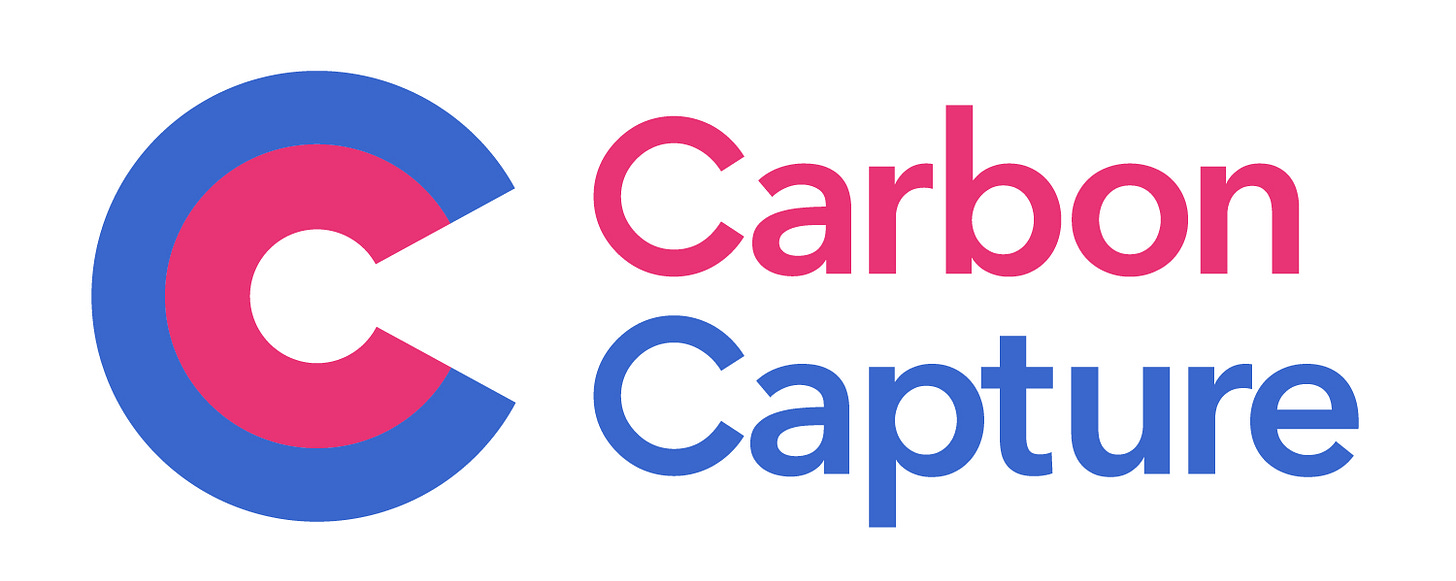8 Unique Direct Air Capture Companies to Watch in 2022
To bring down the cost of DAC, we need these innovative companies to succeed and we need to launch many more like them.
I believe that this is the defining decade for direct air capture (DAC). Not because this is the decade that DAC will actually play an outsized role in mitigating the effects of climate change - in fact, we should primarily be focused on reducing emissions, which can often be done more quickly and cheaply than DAC - but because this decade is a critical juncture for companies, researchers, and policymakers working on DAC to figure out how to do three things:
Improve DAC's performance
Bring down costs
Responsibly deploy the technology
Permanently removing billions of tons of CO2 by mid-century demands that we solve these problems ASAP.
For the last decade, three main companies have shouldered this burden and tirelessly worked through the hairy problem of using DAC to remove CO2 from the atmosphere: Carbon Engineering, Climeworks, and Global Thermostat. It's hard to imagine, but these companies have been around since as early as 2009. Make no mistake, each of them have made significant advances in recent years, and are poised to continue their stride in the years ahead. Climeworks launched Orca at the end of last year, a 4,000 ton per year capacity DAC installation in Iceland, making it the largest commercial DAC facility in the world. Engineering firm Black & Veatch recently received funding to develop a 100,000 ton per year DAC plant based on Global Thermostat's technology. And finally, project developer 1PointFive is deploying a million ton DAC facility in the Permian Basin based on Carbon Engineering's technology, starting construction this year.
The scale of the challenge (billions of tons of CO2 every year) and the urgency on which we must address the major barriers facing DAC (performance, cost, and responsible deployment) calls for new innovators to expand on the successes of these incumbents. Fortunately, the last few years have seen a wave of new companies enter the arena. While not a whole lot is known about each given their early stage of development, I want to share a quick run down of 8 companies worth keeping an eye on and what makes them unique. Here we go (in no particular order)...
Heirloom Carbon
I profiled Heirloom last year because I was excited about their approach leveraging the mechanics of DAC to enhance the natural process of carbon mineralization. Their process puts magnesium or calcium oxides in contact with ambient air (which flows through air contactors), these oxides react with CO2 to form carbonate materials which are later heated up to be reused to continue the carbon removal loop. By leveraging automation, modularity, and using abundant natural materials, Heirloom thinks they can eventually deliver a highly cost-effective and scalable DAC solution.
Mission Zero
Mission Zero - another company I profiled last year - claims to use a novel carbon capture solvent that is more efficient at capturing CO2 from the atmosphere while requiring 3-5 times less energy than incumbent DAC technologies. The fact that their solution doesn’t require high thermal energy inputs makes it easier to power their technology entirely on renewables. They use solvents instead of solid sorbents for carbon capture to reduce downtime, all while maintaining a modular form factor.
Sustaera
Sustaera claims their alkali metal based carbon capture agent can be powered by carbon-free electricity, delivering fast adsorption and desorption rates, while leveraging existing raw materials and supply chains. A recipient of Stripe’s most recent CDR purchase, Sustaera is in the process of developing a 1 ton CO2 per day pilot unit and intend to deploy their first commercial unit (10 ton CO2 per day) by the end of 2023.
Noya
Noya's approach retrofits the existing components of cooling towers found on many buildings to create a DAC unit, resulting in reduced capital costs and installation time typically associated with deploying DAC. Noya’s model is unique too - they will retrofit a business’s cooling tower to capture CO2 at no cost, and then pay the business for the CO2 it captures.
Verdox
Verdox is developing a DAC prototype that charges electrochemical cells to capture CO2, and then discharges the cells to release a pure stream of CO2 for sequestration or use (a process known as electro-swing adsorption). They use quinone electrodes that have a high affinity for CO2 molecules when negatively charged, and no affinity when that charge is deactivated. This is a paradigm shift in carbon capture technology, creating modular DAC units that can be entirely powered by renewable electricity.
Carbon Infinity
Carbon Infinity is developing modular DAC units that are designed to be mass manufactured from the very beginning. Imagine giant “DACtories” in the future, churning out modular, easily manufacturable DAC units that can be quickly deployed to end users. They believe breakthroughs in sorbent materials and a laser focus on standardized, small, modular units are the key to driving down costs.
Read co-founder David Izikowitz’s paper on carbon purchase agreements, DACtories, and supply chain innovations needed to scale-up DAC
Carbon Collect
Developed in partnership with Dr. Klaus Lackner’s team at Arizona State University's Center for Negative Carbon Emissions, Carbon Collect's “Mechanical Trees (TM)” use a passive air capture method that the company claims are a thousand times more efficient than natural trees at removing CO2 from the atmosphere. Known as “passive Direct Air Capture”, their technology circumvents the use of energy intensive fans found in most DAC approaches, letting the wind do much of the work, thereby lowering its overall energy footprint.
Watch this presentation by Dr. Klaus Lackner on “Mechanical Trees”
Carbon Capture
Co-founded by serial entrepreneur and investor Bill Gross (of idealab fame), Carbon Capture’s DAC technology uses existing abundant capture materials, low-temperature solar thermal energy, and systems that can be quickly tuned to changes in ambient and operating conditions. The company claims that combining these features improves the efficiency and lowers the cost of removing CO2 from the atmosphere. Having just secured $35 million in Series A financing and attracted a cleantech industry veteran to the company - Carbon Capture is certainly one to watch!
Watch this great AirMiners interview with Bill Gross
I’m genuinely excited about the DAC space and its near term prospects. There are some exceptional innovators and companies working on the technology and ambitious policies - like the $3.5 billion regional DAC hub effort - to help deploy the technology at scale. Building on these policies, identifying new niches, attracting more talented people and investors to the space, and utilizing innovative financing mechanisms, like advance market commitments, will help realize DAC’s potential across the three priorities I mentioned earlier - performance, cost, and responsible deployment.
I hope to do another post like this in the future because there are many more DAC companies worth shining a spotlight on. Leave a comment on a DAC company you think I should have included and what makes it unique - and I’ll include it in the next iteration of this post.
The views expressed in this post are mine alone and no compensation was received for publishing it. Company logos were retrieved from Google image search. To receive regular ideas and analyses on carbon removal and the new carbon economy, please subscribe. If you enjoyed this post, please share it with friends. And if you’d like to get in touch, you can find me on LinkedIn and Twitter.













Hi! Do you know of any innovative companies reutilizing captures CO2 to create new fuels or forms of energy? Are there any companies capturing CO2 from the air and then reutilizing it as synthetic natural gas or methane for instance? Or is that economically completely unfeasible?